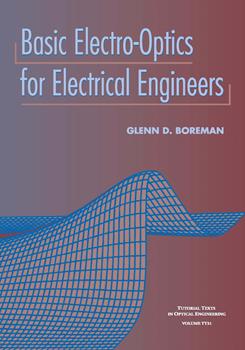|
5.1 Introduction
Responsivity is a measure of output per unit input. Because there are various input and output quantities, there are a variety of ways to specify responsivity: for example, in volts per watt or in amps per photon per second. Responsivity (R) allows prediction of the magnitude of the sensor's response, given a radiometric calculation of flux on the sensor. Thus, responsivity determines the voltage levels involved at the interface between the detector and the preamplifier that follows. The response speed of a detector is pertinent because any signal of interest will vary with time. How fast can the signal flux vary and still have the detector follow the variation? The Fourier transform of the time-domain impulse response is the transfer function, the relative response of the sensor as a function of temporal frequency. Sensitivity is a separate quantity from responsivity. While responsivity is a measure of the output level for a given level of input flux, sensitivity specifies the signal-to-noise ratio (SNR) that the user can expect for a given input flux level. The SNR is a crucial parameter in the determination of image detectability, that is, whether a given feature in the image can be reliably discerned above the noise. The two primary classes of detectors are thermal detectors and photon detectors. Both kinds of detectors respond to absorbed photons, but their mechanism of response differs, leading to differences in response speed and responsivity as a function of wavelength. Thermal detectors absorb the energy of the photon as heat. This heat causes a temperature rise in the sensing element. The sensing element has some temperature-dependent electrical property, such as resistance. The change in this electrical property as a function of input flux level is measured by an external circuit. Photon detectors use the energy of the photon not as heat, but to increase the energy of a charge carrier, so that the carrier makes an electronic transition across a forbidden energy gap. This is typically a transition of an electron from the valence band to the conduction band in a semiconductor material. The excitation of these carriers into a higher energy state affects the sensor's electrical properties. The change of electrical properties as a function of input flux level is measured by external circuitry. We compare the properties of thermal and photon sensors in terms of response speed and spectral responsivity Rλ). Thermal detectors are slow because a finite time is required for the sensing element to rise in temperature after the absorption of energy. Typical time constants for thermal detectors are in the range of tenths of seconds to milliseconds. A trade-off exists between response speed and response magnitude for thermal detectors. Because of their relatively long thermal time constants, waiting a longer time generally produces a larger response from a thermal detector. Photon detectors are fast, because an electronic transition is virtually instantaneous upon photon absorption. Typical time constants for photon detectors are in the microsecond range and shorter. Response speed is often determined by the resistance-capacitance (RC) product of the external readout circuit that interfaces to the photon detector. |
|
|


